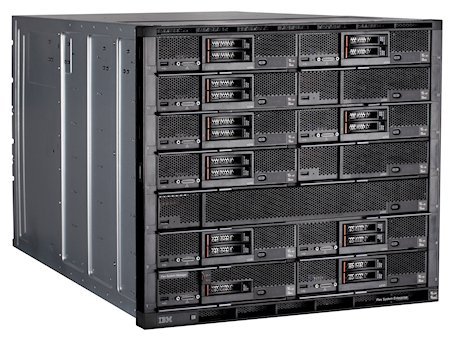You are here: CLASSE Wiki>Computing Web>ComputeFarmIntro (07 Jan 2025, AttilioDeFalco)Edit Attach
Compute Farms @ CLASSE
- CLASSE has 20+ years of experience with batch queuing systems.
- Initially used for high-energy physics:
- CLASSE was host laboratory for the CLEO Collaboration:
- 1979-2012, 200+ individuals / 20+ institutions (peak).
- Early 1990's: 200+ node Solaris farm for simulations and data analysis.
- Decommissioned in 2013-14.
- CLASSE was host laboratory for the CLEO Collaboration:
- Currently, 60-node Linux compute farm with approximately 400 cores.
- Single threaded jobs
- MPI parallel jobs
- Multi-process or multi-node jobs
- Interactive graphical jobs
- GPU jobs (CUDA)
- Used for:
- Electron cloud, photocathode, SRF simulations
- Theorists: parallel mathematica jobs, etc.
Batch Queuing Basics
- Cluster of high-performance compute nodes:
- In general, farm nodes are faster and have more memory than contemporaneous desktops.
- All nodes run 64-bit Scientific Linux 7 (SL7).
- Job scheduling software (Son of Grid Engine) provides equitable access.
- Avoids resource contention.
- Ensures jobs are executed on nodes with adequate resources.
- Compute nodes are logically identical to all other CLASSE SL7 desktops/servers:
- Same operating system and software stack.
- Same access to all centralized resources (file systems, users/groups, environments, etc.).
- Code developed on any CLASSE SL7 system can run on all other CLASSE SL7 systems.
- Documentation: https://wiki.classe.cornell.edu/Computing/GridEngine.
- A powerful tool, especially when coupled with 500+ TB of central disk storage.
Configuration
- Queues, projects, and limits created and tuned as necessary.
- Current settings:
- Maximum of 60 simultaneously running jobs per user
- Unlimited number of queued jobs
- 48-hour wall clock time limit
- Maximum of 24GB memory per batch job
- Maximum of 64GB memory per interactive job
- Maximum of 60 simultaneously running jobs per user
- Numerous options for job submission, such as:
- Memory requirements
- Output locations
- Email notifications
- Nodes to use
- Etc.
Current Hardware
- Most recent deployments in compute farm:
- Four IBM x3550 M4's with two 6-core 2.30GHz Xeon E5-2630's and 128GB DDR3 (left).
- The IBM Flex System Enterprise (right):
- Very flexible node configuration: up to four processors per node, flexible memory configuration, GPU's, 40Gb upgrades, etc.


Grid Engine Demonstration
See GridEngine.- How to submit standard shell scripts (
qsub). - How to create custom grid engine scripts that specify memory and CPU requirements, specify output directory, etc.
- How to submit parallel jobs, and explanation of what parallel jobs are.
- Submit simple batch job, seeing it in the queue, and then receiving email of results.
- Submit interactive job (
qrsh), for example Matlab benchmark.
Sample qsub Script
# Set script linux shell - "bash" is recommended #$ -S /bin/bash # Name of queued job and output files #$ -N regression_tests_demo # Send successful job completion message to this email address #$ -m e -M defalco@cornell.edu # To make sure that the .e and .o file arrive in the working directory #$ -cwd # Put farm node name and start timestamp in log file echo -e "\nOn $HOSTNAME, Starting at: " `date` "\n" # Initalize your runtime environment . /nfs/acc/libs/cesr/cesr_online.bashrc # Move into directory to run the executable, if necessary cd /nfs/acc/user/amd275/sge_demo/regression_tests # Executable to run ./scripts/run_tests.py # Put farm node name and end timestamp in log file echo "On $HOSTNAME, Done at: " `date`
Job Submission Tips & Guidelines
- General purpose login node
lnx201.classe.cornell.edu- Log in with your CLASSE credentials and submit jobs.
- Output and error logs are written to your home directory.
- Contains name of node where the job ran.
- Do not SSH into farm nodes directly.
- Diverts resources from legitimately queued jobs.
- Instead, launch interactive session through queuing system (
qrsh). - For a specific node (e.g. to check CPU/memory usage):
qrsh -q all.q@lnx326
- For I/O bound processes:
- Write temporary files to
/tmp(local to each compute node) to avoid network latency. - At end of job, copy or rsync files to central storage.
- Files in
/tmpare automatically cleaned up periodically.
- Write temporary files to
Other Recent Improvements (2018)
- Updated to latest Son of Grid Engine scheduler.
- Improved checkpointing capabilities
- Improved intelligence in job scheduling (CPU speed, etc.) and prioritization
- Enabling scheduling of GPU units.
- Enabling full-desktop interactive jobs (X2Go).
- New compute nodes.
- Upgrading trailer (farm subnet) connection to 40Gb.
- Upgrade to 10Gb low-latency interconnects
- Always something new!
Attachments ($count)
Edit | Attach | Print version | History: r29 < r28 < r27 < r26 | Backlinks | View wiki text | Edit wiki text | More topic actions
 Copyright © by the contributing authors. All material on this collaboration platform is the property of the contributing authors.
Copyright © by the contributing authors. All material on this collaboration platform is the property of the contributing authors. Ideas, requests, problems regarding CLASSE Wiki? Send feedback
